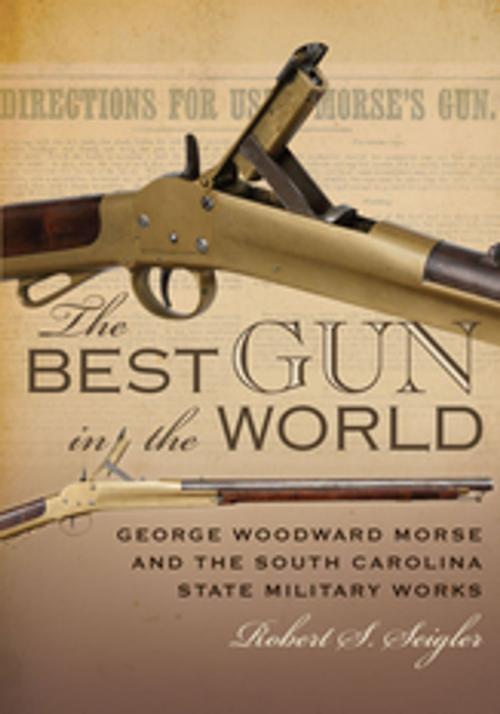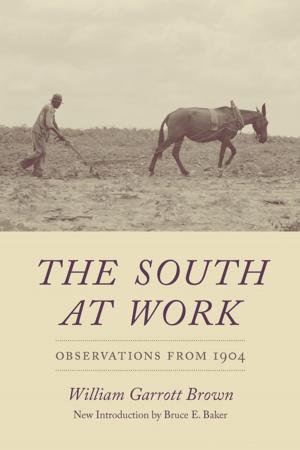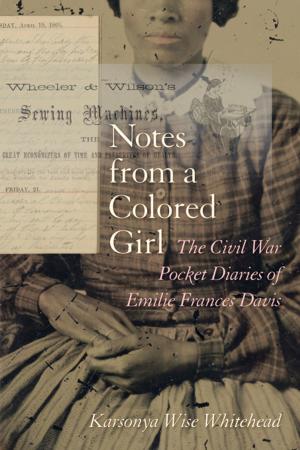The Best Gun in the World
George Woodward Morse and the South Carolina State Military Works
Nonfiction, Home & Garden, Antiques & Collectibles, Firearms & Weapons, History, Americas, United States, Civil War Period (1850-1877)| Author: | Robert S. Seigler | ISBN: | 9781611177930 |
| Publisher: | University of South Carolina Press | Publication: | October 31, 2017 |
| Imprint: | University of South Carolina Press | Language: | English |
| Author: | Robert S. Seigler |
| ISBN: | 9781611177930 |
| Publisher: | University of South Carolina Press |
| Publication: | October 31, 2017 |
| Imprint: | University of South Carolina Press |
| Language: | English |
A year after seceding from the Union, South Carolina and the Confederate States government faced the daunting challenge of equipping soldiers with weapons, ammunition, and other military implements during the American Civil War. In The Best Gun in the World, Robert S. Seigler explains how South Carolina created its own armory and then enlisted the help of a weapons technology inventor to meet the demand. Seigler mined state and federal factory records, national and state archives, and U.S. patents for detailed information on weapons production, the salaries and status of free and enslaved employees, and other financial records to reveal an interesting, distinctive story of technological innovation and industrialization in South Carolina. George Woodward Morse, originally from New Hampshire, was a machinist and firearms innovator, who settled in Louisiana in the 1840s. He invented a reliable breechloading firearm in the mid-1850s to replace muzzleloaders that were ubiquitous throughout the world. Essential to the successful operation of any breechloader was its ammunition, and Morse perfected the first metallic, center-fire, pre-primed cartridge, his most notable contribution to the development of modern firearms. The U.S. War Department tested Morse rifles and cartridges prior to the beginning of the Civil War and contracted with the inventor to produce the weapons at Harpers Ferry Armory. However, when the war began, Morse, a slave-holding plantation owner, determined that he could sell more of his guns in the South. The South Carolina State Military Works originally designed to cast cannon, produced Morse’s carbine and modified muskets, brass cartridges, cartridge boxes, and other military accoutrements. The armory ultimately produced only about 1,350 Morse firearms. For the next twenty years, Morse sought to regain his legacy as the inventor of the center-fire brass cartridges that are today standard ammunition for military and sporting firearms.
A year after seceding from the Union, South Carolina and the Confederate States government faced the daunting challenge of equipping soldiers with weapons, ammunition, and other military implements during the American Civil War. In The Best Gun in the World, Robert S. Seigler explains how South Carolina created its own armory and then enlisted the help of a weapons technology inventor to meet the demand. Seigler mined state and federal factory records, national and state archives, and U.S. patents for detailed information on weapons production, the salaries and status of free and enslaved employees, and other financial records to reveal an interesting, distinctive story of technological innovation and industrialization in South Carolina. George Woodward Morse, originally from New Hampshire, was a machinist and firearms innovator, who settled in Louisiana in the 1840s. He invented a reliable breechloading firearm in the mid-1850s to replace muzzleloaders that were ubiquitous throughout the world. Essential to the successful operation of any breechloader was its ammunition, and Morse perfected the first metallic, center-fire, pre-primed cartridge, his most notable contribution to the development of modern firearms. The U.S. War Department tested Morse rifles and cartridges prior to the beginning of the Civil War and contracted with the inventor to produce the weapons at Harpers Ferry Armory. However, when the war began, Morse, a slave-holding plantation owner, determined that he could sell more of his guns in the South. The South Carolina State Military Works originally designed to cast cannon, produced Morse’s carbine and modified muskets, brass cartridges, cartridge boxes, and other military accoutrements. The armory ultimately produced only about 1,350 Morse firearms. For the next twenty years, Morse sought to regain his legacy as the inventor of the center-fire brass cartridges that are today standard ammunition for military and sporting firearms.















